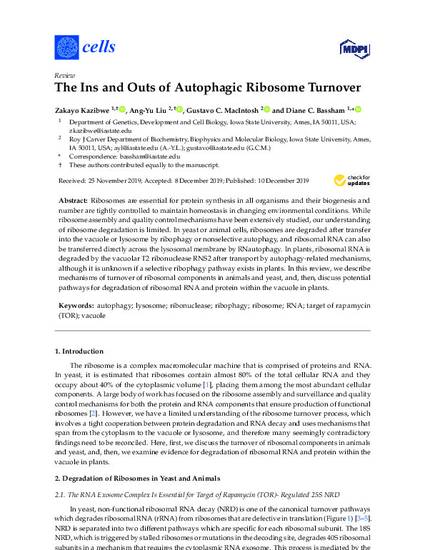
Ribosomes are essential for protein synthesis in all organisms and their biogenesis and number are tightly controlled to maintain homeostasis in changing environmental conditions. While ribosome assembly and quality control mechanisms have been extensively studied, our understanding of ribosome degradation is limited. In yeast or animal cells, ribosomes are degraded after transfer into the vacuole or lysosome by ribophagy or nonselective autophagy, and ribosomal RNA can also be transferred directly across the lysosomal membrane by RNautophagy. In plants, ribosomal RNA is degraded by the vacuolar T2 ribonuclease RNS2 after transport by autophagy-related mechanisms, although it is unknown if a selective ribophagy pathway exists in plants. In this review, we describe mechanisms of turnover of ribosomal components in animals and yeast, and, then, discuss potential pathways for degradation of ribosomal RNA and protein within the vacuole in plants.
Available at: http://works.bepress.com/diane-bassham/36/

This article is published as Kazibwe, Zakayo, Ang-Yu Liu, Gustavo C. MacIntosh, and Diane C. Bassham. "The Ins and Outs of Autophagic Ribosome Turnover." Cells 8, no. 12 (2019): 1603. doi: 10.3390/cells8121603.